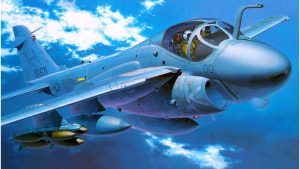Each Walrus-class submarine may carry up to twenty torpedoes, forty mines, and one UGM-84 Harpoon surface-to-surface missile in its four 21-inch (533mm) torpedo tubes.

Submarines are lethal on any ocean, regardless of whether they were built in Russia, China, or the United States. Here we have the Walrus-class submarines. The Royal Netherlands Navy produced innovative advances in military submarine design throughout the 20th century, notably the snorkel. In 1942, Dutch submarines serving in the Far East sank more Japanese warships than their American counterparts.
With the introduction of the Walrus class in the 1980s, the Royal Netherlands Navy’s submarines continued their illustrious traditions during the Cold War.
Walrus-class ships hunted Soviet submarines in the Cold War. These ships had a good name in the years right after the Cold War.
The diesel-electric submarines have taken part in several international military drills, as well as numerous top-secret intelligence-gathering missions and anti-piracy operations off the coast of Somalia.
Because the HNLMS Zeeleeuw (S803) went into service before the lead boat, the HNLMS Walrus (S802) needs some clarification about the class name.
Internally, the boats are vastly superior to their Zwaardvis-class forebears.
One electric motor generates 5,150 kW (6,910 hp) at a single shaft, while three diesel generators with SEMT-Pielstick PA4V200 12-cylinder engines produce 4,700 kW (6,300 hp) together.
Submarines have a top speed of 13 knots at the surface and 9 knots while submerged.
Each Walrus-class submarine is 222 feet (67.5 metres) in length, has a beam of 27 feet, seven inches (8.4 metres), and a draught of 21 feet, eight inches (6.5 metres), for a total displacement of 2,490 tonnes (2,450 tonnes) (6.6 meters). The submarines’ distinctive “teardrop” shape comes from their double-hulled design.
It uses minimal welds and openings in its high-tensile steel construction.
The Walrus class is distinct because its rudders and dive planes form an “X” rather than a traditional vertical cross. The “X-form” after-plane design requires advanced computational control.
Each Walrus-class submarine may carry up to twenty torpedoes, forty mines, and one UGM-84 Harpoon surface-to-surface missile in its four 21-inch (533mm) torpedo tubes.
The submarines were in high demand among NATO members because they were known for being quiet. Joint Task Force Exercise/Theatre Missile Defense Initiative 1999 (JTFEX/TMDI99): HNLMS Walrus “sank” many ships, including the Nimitz-class aircraft carrier U.S.S. Theodore Roosevelt (CVN-71), and then escaped.
The Netherlands Ministry of Defense declared in November 2014 that a new class of submarines would replace the Walrus class. Still, the Dutch parliament announced in early April 2022 that at least two Walrus-class boats would remain in service until the mid-2030s.






